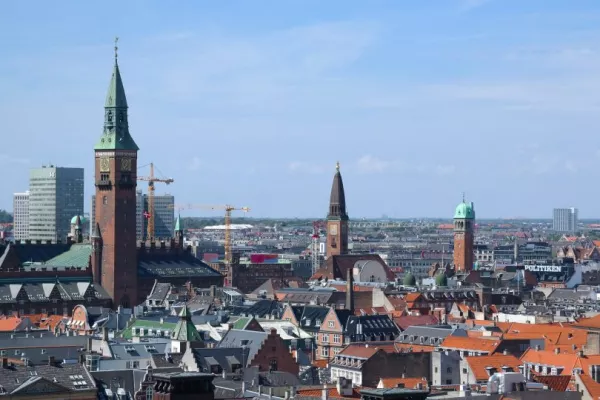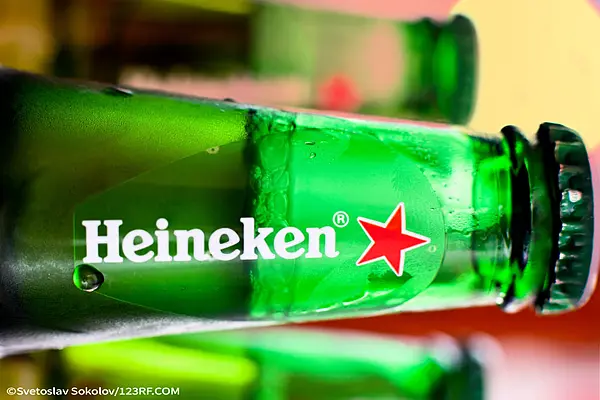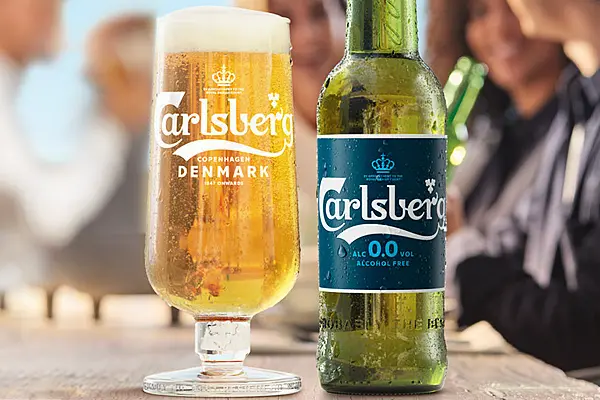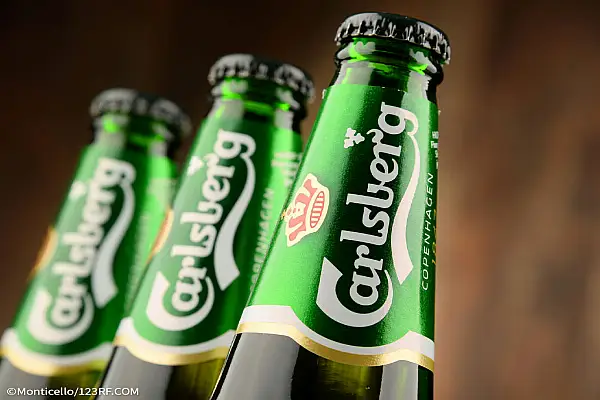Bjarke Ingels’s $660 million Amager Bakke building, or “Copenhill,” as locals call it, stands out for many reasons—not least, the fact that it will claim the city’s first ski slope when it opens this fall.
But Copenhill is more than a ski slope. It has a 278-foot-high artificial climbing wall, a full-service restaurant, and an après-ski bar surrounded by tree-lined hiking trails. And there’s more: The hulking, geometric wedge of silvery aluminum-and-glass paneling does double duty, oddly, as one of the most technologically advanced waste-to-energy plants in the world. Just as it’s altered Copenhagen’s skyline, it may well redefine urban sustainability on a global level.
For Danes, it’s the crowning jewel in their capital’s push to become the world’s first carbon-neutral city by 2025.
It’s a “very ambitious goal … but one well underway,” Lord Mayor Frank Jensen tells Bloomberg. “Our CO2 emissions are down by 33% since 2005.” When active, the new plant will be able to burn a whopping 35 tons of waste per hour—all while cutting emissions by 99.5%.
It’s just one of Copenhagen’s many greening projects. The city's largest utility company, Hofor, is currently decarbonizing its Amagerværket power station, which supplies 98% of the capital’s heat. A thriving cycling program sees 41% of Copenhageners opting for two-wheeled transportation, up from 36% in 2015. A city-wide ban on diesel cars might come next.
In one sense, though, the city is already too green for its own good.
Thanks to modern recycling programmes, there isn’t enough garbage in all of Denmark to fill its 28 plants, Copenhill included. “We have an overcapacity for incineration, and EU regulations make it difficult to import more waste from other cities,” says Jensen. Which raises the question: Why bother building Copenhill at all?
According to Jorgen Abildgaard, Copenhagen’s executive climate-project director, achieving the necessary gains in efficiency required an oversized structure. (To reach its 2025 target, Copenhagen must remove 928,000 tons of carbon dioxide from the atmosphere; Amager Bakke expects the plant to remove 33,000 tons.) Here, thanks to state-of-the-art catalytic filtration that’s never been used before in Denmark, the incineration is nearly pollution-free. At other plants, the smoke from the same amount of garbage would be toxic. But all that technology takes space, and that space came with an equally oversized price tag: $660 million.
So the city is turning to tourism—which brings in upwards of $6.5 billion per year—to make the plant economically viable. That’s one reason for its central location, within the city limits. If your fishing line were strong enough, you could sling it across the harbor from Copenhill and hit the national Opera House. It’s also just 13 minutes from the airport, making it unmissable, even for first-time visitors. Vienna pulled off a similar feat with its Spittelau plant, fashioned in 1992 by “eco-architect” Friedensreich Hundertwasser into a colorfully bizarre, artful landmark. It draws more than 100,000 visitors each year to its educational “world of energy” center.
Copenhill aims for more. Standing atop the slope, with its sweeping views of city and sea, the usually sleepy practice of environmental consciousness takes on a subtle thrill, which is perhaps a reflection of starchitect Bjarke Ingels himself—he’s as passionate about sustainability as he is about snowboarding. Here, the air is clean and crisp as a massive labyrinth of shiny silver metal pipes, compressors, fans, and valves do what they do, converting billows of white steam into clean energy below.
Most visitors will never see the guts of the complex. They’ll be welcomed at a pristinely clean, minimalist lobby, where a climbing wall and two outdoor ski lifts will be installed to whisk visitors up to the piste—for around $20 per hour—where they can shred, hike, or run down its 590-foot slope before refueling at the indoor bar with a cold Carlsberg beer and “Danish tapas.” (Think pickled herring on fermented bread.)
Until the complex opens, hungry travelers who want to see the city’s sustainability efforts in full swing should head to Refshaleoen, the upward-trending neighborhood next door. Here, the new Noma has a greenhouse on the roof and bicycles-only parking. Nearby Amass professes a high-end, zero-waste dining philosophy; this fall, the restaurant’s chef, Matt Orlando, is planning to follow up with an organic brewery. And street food market called “Reffen” is slated to open in May with 100 stalls—all linked by a shared commitment to use only local produce and minimize carbon emissions.
Christian Ingels, Bjarke’s cousin, will run Copenhill with a similar ethos. He’s aiming to attract 300,000 visitors per year to the site, including roughly 65,000 skiers wooed by the novelty of a mountain in an otherwise-flat country. And while his exact lineup is still in the works, he envisions a wide roster of events, including pop and rock concerts in the parking lot. He compares the project to Legoland—a recreational playground with wide appeal for families—which feels like a night-and-day comparison to Tivoli, the grand, sophisticated amusement park in Copenhagen’s city center.
Regardless, Copenhill will prove a notable test-case for the future of urban greening. “I want my colleagues in other cities to know that waste incineration works; the technology is there,” declares Jensen. “And it’s very good for the economy.”
Article by Bloomberg, edited by Hospitality Ireland









